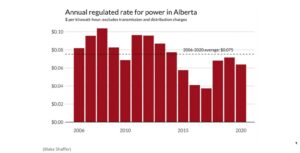2025 TFSA Limit: $7,000
The Canada Revenue Agency (CRA) has officially set the 2025 TFSA contribution limit at $7,000, the same as in 2024. This allows Canadians to continue shielding their investment earnings from taxes. This article provides a comprehensive guide to understanding the 2025 limit, calculating your contribution room, eligibility requirements, and smart strategies for maximizing your TFSA.
What is a TFSA?
A Tax-Free Savings Account (TFSA) is a registered account that shelters your investment earnings from taxes. Unlike a Registered Retirement Savings Plan (RRSP), contributions aren’t tax-deductible. However, any interest, dividends, or capital gains earned within your TFSA grow tax-free, and withdrawals are also tax-free. This makes a TFSA a flexible tool for various savings goals, from short-term needs to long-term planning.
Calculating Your 2025 TFSA Contribution Room
While the annual contribution limit for 2025 is $7,000, your total contribution room depends on when you became eligible and your contribution history. If you were 18 or older in 2009 (when the TFSA program started) and have never contributed, your total contribution room as of January 1, 2025, is $102,000. This amount is the sum of the yearly limits since the program’s inception.
Here’s a breakdown of the yearly TFSA contribution limits:
| Year | Contribution Limit |
|---|---|
| 2009 | $5,000 |
| 2010 | $5,000 |
| 2011 | $5,000 |
| 2012 | $5,000 |
| 2013 | $5,500 |
| 2014 | $5,500 |
| 2015 | $10,000 |
| 2016 | $5,500 |
| 2017 | $5,500 |
| 2018 | $5,500 |
| 2019 | $6,000 |
| 2020 | $6,000 |
| 2021 | $6,000 |
| 2022 | $6,000 |
| 2023 | $6,500 |
| 2024 | $7,000 |
| 2025 | $7,000 |
If you’ve contributed in previous years, subtract your total contributions from $102,000 to determine your available contribution room. Remember, withdrawals are added back to your contribution room in the following year. For example, if you withdrew $2,000 in 2024, this amount would be added to your 2025 contribution room.
TFSA Eligibility: Who Can Contribute?
To contribute to a TFSA, you must meet the following criteria:
- Canadian Resident (or Deemed Resident): You must be a resident of Canada for tax purposes.
- 18 Years of Age or Older: You must be at least 18 years old.
- Valid Social Insurance Number (SIN): You need a valid SIN.
Over-Contribution Penalties: What Happens if I Contribute Too Much?
Exceeding your TFSA contribution limit results in a 1% tax penalty per month on the over-contributed amount. Withdraw the excess funds as soon as possible to minimize penalties.
Maximizing Your TFSA: Smart Savings Strategies
- Automate Contributions: Set up regular, automatic contributions, even small amounts, to consistently build your savings.
- Explore Investment Options: Consider diversified investments within your TFSA, such as stocks, bonds, or GICs, based on your risk tolerance.
- Seek Professional Advice: Consult a qualified financial advisor for personalized advice tailored to your financial goals.
TFSA Withdrawals and RRSP Comparison
TFSA Withdrawals
You can withdraw money from your TFSA at any time, tax-free. The withdrawn amount is added back to your contribution room the following year.
TFSA vs. RRSP: A Brief Overview
Both TFSAs and RRSPs are valuable savings vehicles. TFSAs offer tax-free withdrawals, while RRSP contributions are tax-deductible, but withdrawals are taxed in retirement. The best choice depends on your individual circumstances and financial goals. For more information about RRSPs, see the CRA website.
Frequently Asked Questions (FAQ)
- Q: Can I hold multiple TFSAs? A: Yes, you can have more than one TFSA, but your total contributions across all accounts must remain within your contribution limit.
- Q: What happens to my TFSA when I die? A: Generally, your TFSA proceeds can be transferred to your spouse or common-law partner tax-free. Other beneficiaries may be subject to tax. Consult a financial advisor for estate planning advice.
Disclaimer: This information is for general knowledge and does not constitute financial advice. Consult with a qualified financial advisor for personalized guidance tailored to your specific financial situation.







